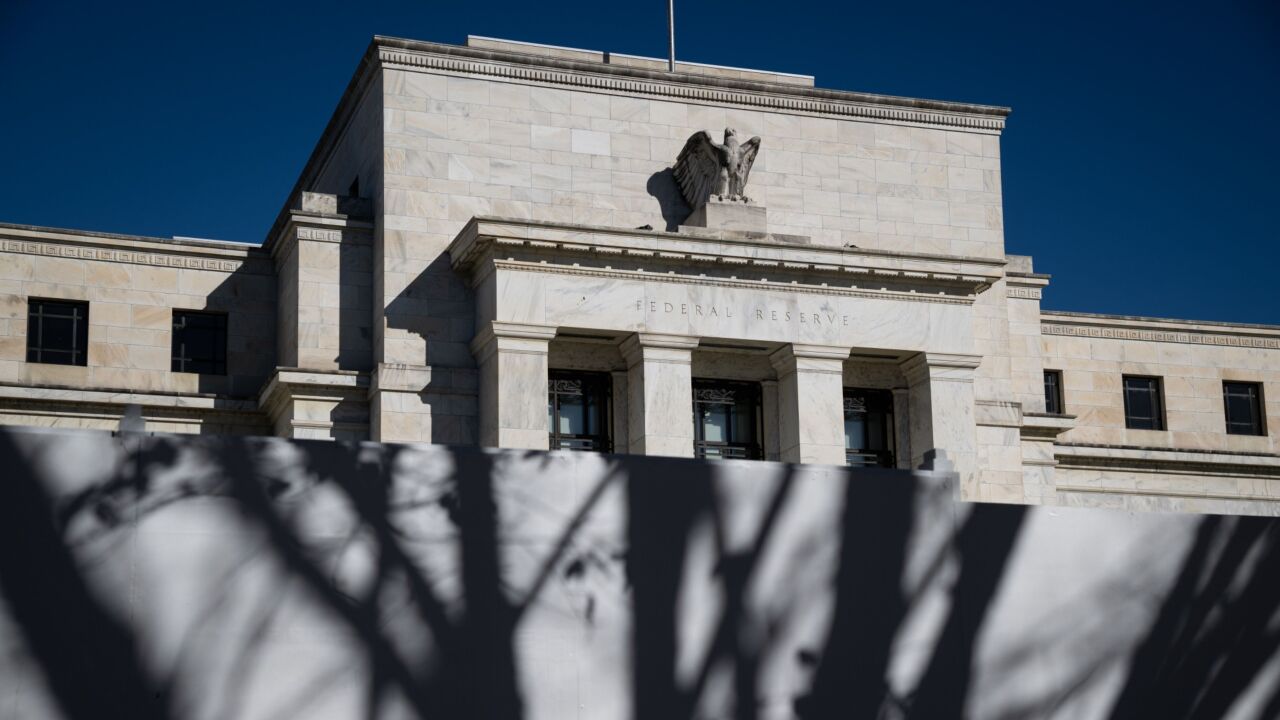-
Investors are buying more of the riskier portions of collateralized loan obligations, fueling the CLO market and demand for bank loans.
October 26 -
Leveraged loans arranged by banks set a record in August, and issues of collateralized loan obligations are now on pace to hit $30 billion this year.
September 5 -
Collateralized loan obligations are gaining new life as a way for nonbanks to finance loans to midsize businesses. NXT Capital's chief financial officer, Neil Rudd, explains how in detailing a recent deal.
May 15

Take that, baby.
The market for U.S. collateralized loan obligations was truly reborn last year in hitting $55.2 billion. An infant generally triples its body weight in the first year of life, but new-issue CLO volume quadrupled, according to data from Royal Bank of Scotland analysts.
Early growth spurts generally lay the foundation for future healthy expansion. This appears to be where the CLO's primary market sits as 2013 gets underway, with analysts predicting issuances of $60 billion to $70 billion this year. That would get closer to the peak of $92.8 billion in 2007.
The market's performance matters to banks because they invest in and market CLOs, and CLOs also invest in loans syndicated by banks.
Market participants on the buy and sell sides reckon that the 2013 forecast is within reach, with the usual "barring any unexpected macroeconomic upsets" caveat.
"Volatility is the primary market enemy," says John Clements, a managing director in the CLO unit at Citigroup (NYSE: C). "If we see any volatility in the credit markets or the broader markets … that could dampen issuance. But assuming status quo, I think it's a $60 billion-plus market [in 2013]."
An increasing number of buyers, "up and down the capital structure" will create enough demand, he says.
The CLO market grappled with the problem of a narrow investor base after it began putting back the pieces after the financial crisis. Some potential new investors — regional banks, public pensions, foundations and endowments — began taking a look in 2011, but it was not until 2012 that the base began to widen significantly.
Now, market participants say, historically low interest rates and the search for yield have sparked interest from sources as varied as traditional mortgage-backed securities investors at the equity level and mutual funds at the mezzanine and triple-A level.
"Certainly, the domestic market has opened and warmed to the asset class," says John Popp, head of the leveraged investments group at Credit Suisse Asset Management, which printed four CLOs in 2012. "We have been meeting with fixed-income portfolio managers from mutual funds, which would be a new trend that could help drive demand."
The prospective buyers include "household-name mutual fund complexes" seeking triple-A investments, Popp says.
Demand for triple-A paper is an important aspect of continued growth for the CLO market, as tighter spreads help stabilize the product.
"What I think has to happen in order for the CLO issuance to be as robust [as it has been] is for credit spreads on the liabilities to continue to tighten," says John Lapham, co-head of PineBridge Leveraged Finance. "Because the arbitrage gets pretty thin absent a material move in the triple-As."
The last few CLOs of 2012 printed with triple-A pricing in the 140 bps area, where it has been, more or less, since October, after inching down from a range of 140 to 150 bps. Conventional wisdom is that spreads will continue to constrict because of increased demand, and some market participants believe the market will see far more significant tightening this year.
"We think new-issue triple-A spreads should tighten dramatically in 2013 to be inside of 100 hopefully by the third quarter, definitely by yearend," said Josh Terry, head of structured products and trading at Highland Capital Management. "When you look at triple-A CLO paper relative to other triple-A securitized products, you have all of your standard, well-known triple-A products such as credit cards, autos, etc., all trading at more or less 20 to 30 bps for a similar duration. We believe [current CLO triple-A pricing] is just a function of technicals rather than fundamentals, as it's the most challenging tranche to place for most CLO deals."
The CLO market is also dependent, in more ways than one, on loan-market issuance. For example, a wave of repricings could put a strain on CLO arbitrage, which could cause the market to slow a little. Or a big uptick in retail loan fund flows, without a commensurate uptick in real new issuance, could drive up a demand for loans from the mutual funds and that could put downward pressure on loan spreads. Not to mention that, in general, CLO managers would like to see more loans to finance M&A activity.
But the possibility of real trouble on the loan market seems unlikely, again, barring macroeconomic turmoil. U.S. issuers printed $465 billion of new leveraged loans in 2012, of which more than $300 billion comprised syndicated institutional loans, according to S&P Capital IQ LCD. That's 24% more than in 2011, which saw $375 billion in volume, and the third biggest year for the primary loan market, behind 2006 and 2007.
Wider acceptance of CLOs as a product and more demand for CLO paper also led to an increasing number of managers entering or re-entering the market last year. In total, 2012 saw 121 deals by 68 different managers, according to RBS analysts.
Whether this is a good thing depends on how you look at it.
"No. 1, it crowds out CLO investors, and No. 2 it creates more demand for the underlying loans. So in a perfect world we'd love to go back to the spot where only 25 to 30 managers could issue," Lapham says. "But the fact that more managers can issue CLOs is probably ultimately good for the economy since it does make capital cheaper to the ultimate user of capital which is the corporate issuers."





